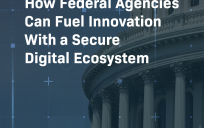The complexity and scope of government missions often outpace the technologies employees have at their disposal. Part of the challenge is staying current with what solutions are available in the market.
The other side of that coin, however, is figuring out how to buy what is needed, whether it be cloud, artificial intelligence (AI) or other technology solutions.
“There’s a lot of things that can happen through a procurement cycle, from the onset of developing requirements to ensuring that the customer is taken care of,” said Jeff Hopkins, Vice President, Business Development Federal Acquisitions, at Future Tech Enterprise, Inc.
A longtime Beltway veteran, Hopkins joined Future Tech in late 2019 and has built a team that prioritizes making procurement frictionless. “The key parts to frictionless procurement include Future Tech’s comprehensive range of IT solutions, exceptional responsiveness and having the right contract vehicles,” he said.
But sometimes there is a gap between agencies and industry as it relates to what is the best solution to support their missions because technology changes every day.
“There’s a discovery process required for government and new companies,” Hopkins said. “We help bridge that gap to help agencies adopt new technologies, such as bringing AI and virtual reality solutions to federal contracts for the first time. We help to answer questions, introduce them to the technology, and support inquiries around the technology’s maturity and competencies for testing it.”
Hopkins provided tips to avoid some of the parasitic drag in the procurement process while seeking the newest technologies:
First, he recommended that agencies identify existing contracts that best align with their needs.
NASA’s Solution for Enterprise-Wide Procurement (SEWP V), for example, is a Best in Class (BIC) among the governmentwide acquisition contracts (GWACs) that agencies can use to buy the latest commercial solutions and services.
“It’s quick, easy to use, great customer service and the scope is large,” he said. “The procurement community needs to become more familiar with the flexibility that this contract offers. I recommend to my customers that they familiarize themselves with the agency catalog.
The more familiar customers are with the offerings on a contract, the easier it is for them to make efficient procurements the norm rather than the exception. When it comes to buying new technologies, no one wants to be “first to jump in the pool,” Hopkins said. But opting for Best in Class, trusted and widely used contracting vehicles can help ease concerns and reduce the unknowns of procuring new technology capabilities.
The strength of these contracts, along with a diverse pool of partners we provide to support the government requirements, helps. As a women-owned small business, Future Tech excels in bringing together companies with complementary solutions that could ultimately benefit the government.
“To me, it’s about transparency, honesty and strong relationships with our customers and partners,” he said.
This article is an excerpt from GovLoop’s recent guide, “Delivering Government Services Through a Lens of Equity: Technology, Policies and Conversation Starters.” Download the full guide here.






Leave a Reply
You must be logged in to post a comment.